
Samantha Rohn


According to Bain & Co., increasing your customer retention rates by 5% can increase your organization’s profits anywhere from 25% to 95%. And the most critical factor that determines whether your customers churn or stick with your business is the quality of product support after the purchase.
And over and again, studies, surveys, and reports confirm that there’s a strong correlation between excellent product support and getting repeat business from your customers:
So, if you’re serious about growing your customer retention rate, you need to figure out how to meet your customers’ and prospects’ ever-increasing expectations. To effectively empower your end-users and customers, you’ll need robust product documentation and end-user support strategy to help your end-users search and find relevant end-user documentation.
Product support refers to the infrastructure—including content, tools, and self-help experiences—that is designed to teach and support your users on how your product works, resolve their issues when they arise, and turn their feedback into new features or product improvements.
The major difference between product and customer support is what they focus on, and in fact, product experience (PX) is really a subset of customer experience (CX). But, the difference between both is critical, as CX focuses on making your customers’ interactions with your business seamless and productive, while PX focuses on helping them understand and extract value from your product.
Here are five common types of product support services to empower end-users and customers:
Self-service refers to a support infrastructure designed so customers can learn more about a product and resolve issues using on-demand resources. These include FAQs, knowledge bases, in-app guidance with tooltips and hotspots, explainer videos, and tutorials.
69% of customers prefer self-service over any other form of support since it helps them avoid jumping through hoops with agents. We’ve published extensively on the customer self-support model, how it decreases time-to-value, and saves your product support team’s precious time by deflecting tickets.
The very first call centers started springing up in the 1960s and has since gone mainstream. Part of the reason why phone support has stayed around is because of the synchrony factor—customers can speak with a product support agent right away, and they’re even willing to wait for a while since there’s an implied guarantee that their issue will be resolved instantly.
But, you don’t want to make them wait too long since research suggests that roughly 60% of customers will only wait for a minute before hanging up if they can’t speak with a product expert.
Conversely, email helps with asynchronous support and it’s ideal when you have a smaller team and can’t reply to all your customers’ queries in real time. On the downside, email leaves little room to impress customers with a personal touch and it’s faster to dispatch, so customers might be a little trigger-happy instead of trying to find a fix themselves.
Platforms like HubSpot, Intercom, and Drift offer live chat software that businesses can embed on their website. Live chat support tools are usually designed with chatbot functionality, powered by branching logic that’s designed to answer your users’ FAQs and point them to helpful support articles on the subject.
That way, tickets are only escalated to a live agent if it’s for an edge case that doesn’t have a standard fix.
Despite the non-stop backlash social media platforms tend to receive, they’re still massively popular and constitute one of the major channels where modern customers are active.
Facebook, Instagram, WhatsApp, and Twitter have 1.929 billion, 500 million, 2 billion, and 450 million daily active users, respectively. Building a social media support infrastructure is a low-hanging fruit for tapping into those networks.
You can set up messaging chatbots built with if/then logic or assign specific staff to manage your social channels and respond to customer queries.
Business messaging applications like Slack, Microsoft Teams, and Rocket Chat have third-party integrations that make it possible to reply to customer queries, track ticket status, hand off conversations to teammates, conduct polls, etc., from inside the messaging interface.
For example, we use an attribution tool called HockeyStack here on the Whatfix marketing team and have a dedicated HockeyStack and Whatfix support channel on Slack where we actively communicate with our customer success team on how to use certain features, requesting new features, product support questions, and more.

New technology such as AI, ML, chatbots, and enterprise customer support software often empower companies to provide better, more contextual, moment of need product support. Here are a few examples of how technology is changing the way product support is created, consumed, and consumed:
With the rise of ChatGPT, we’re seeing AI change customer support paradigms so quickly that it’s hard to accurately predict what the next six months holds in store. Previously, chatbots designed with if/then branching logic could circle customers through multiple choice queries and suggest helpful content based on their replies—only when an issue was an edge case would it be escalated to a live agent.
You can integrate your support helpdesk with LLMs that are plugged into your product documentation, FAQ pages, and product community forums. Instead of replying with templated responses, an AI-powered chatbot can craft custom replies that suggest the exact resource for a customer’s query with an extremely slim margin of error.
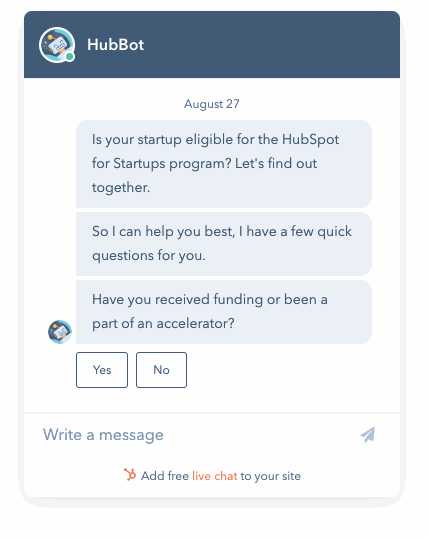
The biggest upside of support automation tools is the self-serve factor—they help your customers access the resources they need to solve their issues without contacting a live agent.
But, while they can be configured easily to solve common problems your support team has encountered, support automation tools are handicapped when customers encounter edge cases that can’t be solved with templated copy and suggestions.
As mentioned above, innovations like artificially-intelligent chatbots can digest your company’s product docs and FAQs and answer your users’ queries faster and more comprehensively than a chatbot that’s designed to spit out preprogrammed answers.
But, it goes even a step further: depending on the level of access you’re comfortable granting it, LLMs (like ChatGPT) can browse your product’s underlying code base, usage-based pricing infrastructure, customer accounts, and even usage history to get a better perspective on the issues specific customers are facing and to be able to suggest custom answers tailored for each users’ issues.
Gone are the days when users had to read through walls of text to learn how software products work. Now, with contextual guidance tools like UX hotspots and tooltips, it’s easy to gently nudge customers, guide them through your product’s interface with step-by-step walkthroughs, localize helpful content into each user’s preferred language, and gamify the onboarding experience with to-do lists.
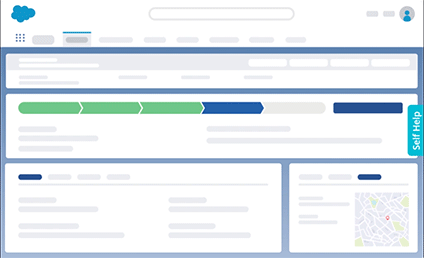
Building a helpful product support strategy empowers end-users throughout the various stages of the customer journey and lifecycle. These benefits include:
Microsoft’s 2018 State of Global Customer Service survey shows that 95% of customers say that the quality of customer service factors into their decision to stay loyal to a brand, while 61% of respondents said they’d switched brands due to poor customer service, and nearly half had done that in the previous 12 months. Pairing customer service training with a sound product support strategy will help you provide the level of customer service needed to retain loyal customers.
In 2011, researchers at Gartner discovered that trying to ‘wow’ customers doesn’t significantly impact loyalty; what keeps customers loyal are effortless experiences where they can complete their desired action or get the help they need without jumping through hoops.
Like, The Effortless Experience, Gartner’s book on the subject of customer experience puts it, “Loyalty is driven by how well a company delivers on its basic promises and solves day-to-day problems, not on how spectacular its service experience might be. Most customers don’t want to be “wowed”; they want an effortless experience.”
The Gartner team found that the differences stellar product support makes were quite shocking, and as much as 96% of customers who had to jump through hoops to engage with a business became disloyal, compared to just 9% with low-effort interactions.
Effortless product support teaches your users how your product works—before they run into hitches and have to reach out to customer support. That proactive approach makes it easier to delight them and retain customers for longer.
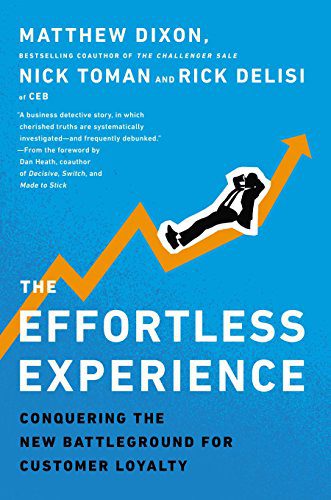
THE EFFORTLESS EXPERIENCE
AUTHORS: MATTHEW DIXON, NICK TOMAN, RICK DELISI
Customer support expert Esteban Kolsky estimates that 13% of unhappy customers will share their unpleasant experiences with 15 or more people— so it’s not a matter of if but when negative feedback starts pouring in. Or, as Catherine the Great puts it, “Bad news travels faster than good.”
A product support infrastructure will help you intercept those bad reviews and dismal word-of-mouth—even if you can’t fix your customers’ issues right away, you can make them feel heard, placate them with discounts and bonuses, and replace bad memories with good, or at least not-bad ones.
Let’s refer back to Gartner’s CX research again: according to their researchers, low-effort experiences cost 37% less and reduce repeat calls (40%), escalations (50%), and channel switching (54%). While it might seem reductive, your customers don’t sincerely enjoy badgering your support agents—they don’t have any other choice until you either fix their issues, or they churn.
Product support actually creates a positive feedback loop where solving your customers’ issues keeps them happy and reduces your support pipeline to edge cases and technical challenges.
The larger companies grow, the more willing they are to spend ~$50k annually on market sentiment research from consultancies like Accenture, Spiceworks, or Nielsen. But, you could go for the inexhaustible, lowest-hanging fruit for far cheaper: talk to your customers! When you start looking for patterns in your product support tickets and conversations, you’ll begin to see pain points that users want fixed and will even pay extra to get.
Product support helps you understand where users struggle with your product’s UX, and the frequency of tickets raised for specific issues can help you understand your customers’ sentiment towards certain features.
Great product support does more than resolve your users’ issues—it serves as a conduit for getting unfiltered product feedback that shows you what your users love about your product and what could be improved. Granted, you can’t turn every customer ticket into an engineering priority, but when users bring up certain issues repetitively, it’s most often than not a sign of a more significant trend across your user base and helps you pinpoint features to build or optimize.
According to Bain and Company, customers are four times more likely to switch to a competitor if the problem they’re having is service-based. Whether offered via live conversations or on-demand content, product support is usually the shortest line from issue-to-resolution for customers, and either reinforces or changes their opinion about your product for better or worse.
Qualtrics’ 2020 ROI of Customer Experience Report shows that 90% of customers trust a company whose service they’ve rated as “very good” to take care of their needs, while only 16% of customers who give an inferior rating trust companies to the same degree.
Building customer trust increases their likelihood to patronize your business and stay loyal, especially in the internet age where competitors keep popping up and it’s easier than ever for customers to take their business elsewhere.
Of course, not all product support is equal – here are the best practices for providing excellent product support.
Research by HubSpot shows that 33% of customers are most frustrated by having to wait on hold, Freshworks reports that 80% of customers want even faster responses, while Northridge Group says that 72% of customers are likely to switch to a competitor after just one negative experience with a brand.
On-demand support focuses on maintaining content libraries like product documentation, explainer videos, and step-by-step guides that proactively teach users how to solve common issues and reduce the likelihood that they will contact product support for assistance.
Better still, a digital adoption platform (DAP) like Whatfix can help you embed your support widgets right inside your product’s UX so users can access the resources they need without switching context or opening a new tab.
Forrester’s 2018 Customer Service Trends shows that customers prefer knowledge bases over all other self-service channels, while 89% of millennials use a search engine to try hunting down the help they need before reaching out to support, according to Salesforce.
Combining those two data points makes it easy to see that:
That’s where knowledge base software comes into your support system: Your knowledge base needs to be searchable, easy to find (preferably embedded inside your product), and rich with relevant resources so users can find any product documentation or guide they need before trying to contact live support.
Failing to respond to customer queries via social media can lead to a 15% increase in churn among existing customers (Gartner); 42% of American online adults say it’s important for retailers to offer live online chat on their websites; and 45% of American adults would abandon a purchase if they can’t quickly find answers to their queries on demand.
Aren’t those data points a bit contradictory? Or do customers expect you to be active on every channel—social, live chat, on-demand content, phone, etc.?
Yes, they do.
You need an omnichannel customer experience approach to product support to cover all the bases your customers expect support from without hurting the quality of assistance they receive.
According to Statista, ineffective support is the biggest reason (27%) that frustrates customers, while the 10th edition of the Customer Rage Survey shows that 43% of customers have yelled or raised their voice to express displeasure about their most serious issues. Your product support agents need to know enough about your product to understand customers’ issues, placate them, and then walk them through how to fix these issues step by step.
Measuring your customer experience metrics such as NPS, CSAT, AHT, TTR, and CES will help you understand what your customers think about your product—specifically, you can use point-of-experience surveys and polls to collect feedback when users complete actions.
Continuously improving support involves regular analysis of customer feedback and implementing changes to enhance the customer experience. By doing so, product support teams can address customer pain points, reduce the number of support requests, and build strong relationships with their customers. This results in increased customer satisfaction, improved efficiency, and increased customer loyalty.
Be ready to try out new tools and techniques and create a training regimen to continuously improve your support agents’ skill level.
Providing great product support is not without its fair share of challenges as well.
Data collected from 1,000 customers by support software vendor Jitbit shows that the median support technician handles 21 tickets per day and takes three days and 10 hours (i.e., 82 hours) to close tickets.
Their sample size may be a little limited, but it paints an interesting picture: product support agents always have a lot on their plate, and you can’t lighten their load without spending substantially. And if your product is complicated and requires that agents spend a long time fixing issues, you end up with a longer average handle time and even less time for your customers.
Product support is a more critical problem for startups and small businesses since they usually have limited budgets to hire product experts, train them, create content libraries, and replace the staff they lose to attrition (of which support has some of the highest rates).
It costs roughly $4,129 to train a new hire (i.e., $412.9k for 100 employees), according to the Society for Human Resource Management. That figure jumps 5x to $10k – 20k for support-specific roles, and that money mostly goes towards 1:1 coaching sessions, courses, webinars, and on-demand resources served via a learning management system.
But, for all that investment, support agents have some of the highest attrition rates that range from 42% to as high as 87.6%, according to a 2022 Cresta Insights report.
Suppose you choose to outsource so you can ramp up quickly. In that case, it’s only a temporary solution, and soon, you’ll realize training your support agents in-house is a better idea compared to spending $2,600 to $3,400 per agent per month (i.e., up to $4.08 million annually for 100 agents).
Whether you choose to outsource to low-wage countries like the Philippines, Brazil, or India; train your support agents in-house; or bring in training partners, there’s no single right answer, and you’ll most probably bleed cash for 12 – 18 months before you have a reliable product support team.
The product support industry is constantly in flux as your customers’ patience drops and competitors keep setting the bar higher. That’s why we’ve moved from call centers, email, and IVR to live chat, chatbots, and artificially-intelligent support agents that can scan your product docs, customer accounts, and help resources to give customers up-to-date information—in just two decades.
As product support innovation advances, it’s easier to delight customers and fix their issues almost automatically. Your competitors will keep raising the bar and training customers across your industry to expect better, faster support.
Modern customers are accustomed to an omnichannel support experience, and failing to account for any one channel means you’re leaving money on the table and reducing your customer’s likelihood to convert or keep using your products.
If you have overseas customers, you need to design your product support infrastructure to ensure it’s always on so they’ll always be able to access help on-demand. That might require investing in hiring, onboarding, and training product support agents based around the world.
Product support automation tools like chatbots, canned responses, and machine-learning-powered virtual assistants can help you scale up your support availability and process generic queries quickly. Generic— that’s the key word; once a customer needs specialized support with an edge case you never accounted for, automated customer support becomes annoying.
Great customer support needs to be balanced so you can use automation and on-demand resources to solve basic issues, but create a hand-off system for passing customers with more complicated issues to live agents.
Under GDPR provisions, EU data protection authorities can levy fines up to €20 million or 4% of your company’s worldwide turnover, and American privacy violation penalties can go as far as $50k per violation under rules such as the HIPAA Act. Your product support infrastructure needs to be designed to process personally-identifiable data and your core support functions safely.
You need to plan to proactively intercept unsatisfied customers with NPS surveys, polls, and 1:1 feedback sessions (for high-ticket customers) to solve their issues and reduce the frequency of negative reviews and word-of-mouth.
Here are the top product software vendors available today.

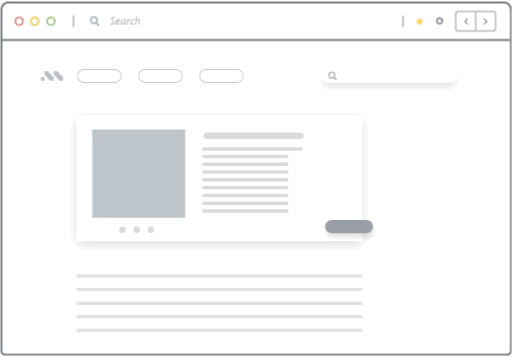
Whatfix is a digital adoption platform (DAP) designed to help enterprises engage users and proactively resolve customer issues with on-demand content. Our platform acts like an add-on on top of your product and your customer support helpdesk that helps you:
Teach users to navigate your product’s UX with interactive walkthroughs and product tours

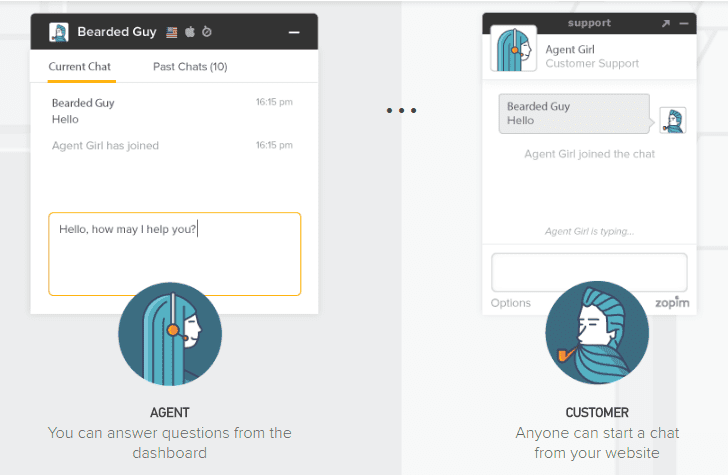
Zendesk includes customer service tools that let you:
Now, for the downside, Zendesk has a complicated pricing structure with different tiers, such as Suite Team, Suite Growth, Suite Professional, Suite Enterprise, etc.
Depending on your company’s size, it can be a bit expensive, as Zendesk pricing goes as high as $249 per agent per month ($2,580 per agent per year, if billed annually) for enterprises. The loadout of features it offers can also be overkill, although there are lower tiers.

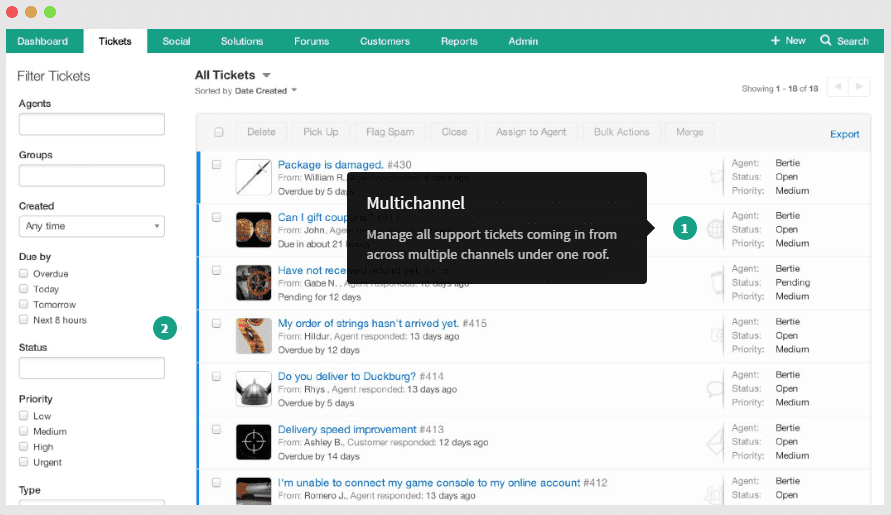
Freshdesk is a multi-channel support CRM that’s designed to help growing companies engage their customers across email, social (WhatsApp, Instagram, Facebook Messenger, Telegram, etc.), SMS, phone; build comprehensive customer profiles, track behavior trends, and customer health; and scale your phone support operations with a remote call center infrastructure.
It offers a free trial and costs significantly less than mainstream support CRMs like Zendesk and Intercom.

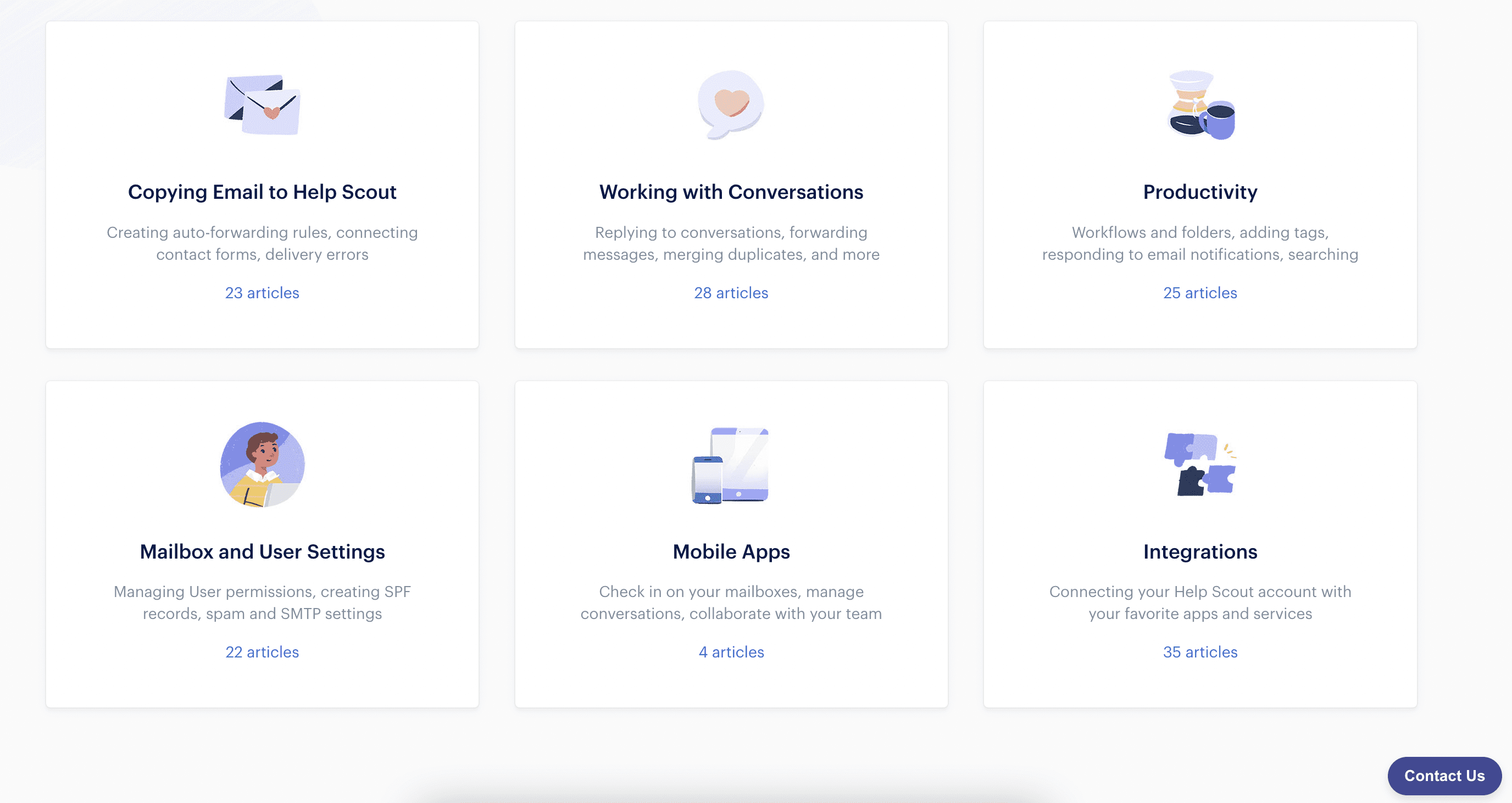
Help Scout combines a shared inbox, live chat, knowledge bases, and in-app messaging into one suite where product support teams can share customer data, collaborate on the support process, and integrate with third-party customer experience tools.


Intercom offers automated customer services solutions that are designed to help internet businesses engage customers at scale, resolve issues with AI-powered solutions, and reduce support costs with an all-in-one product support platform.
Whether you opt for Freshdesk, Intercom, Help Scout, etc., we can agree that product support as we know it is changing. Companies that embrace modern innovations like AI, machine learning, and on-demand assistance will be able to engage customers faster, offer personalized help instead of canned responses ad infinitum, and reduce their support costs by automating repetitive tasks.
Whatfix can help you unlock the power of whichever product support platform you opt for, using our ABD infrastructure designed for enterprises:
Learn how Whatfix can simplify your product adoption by proactively answering your users’ potential questions before they ever ask!

Thank you for subscribing!
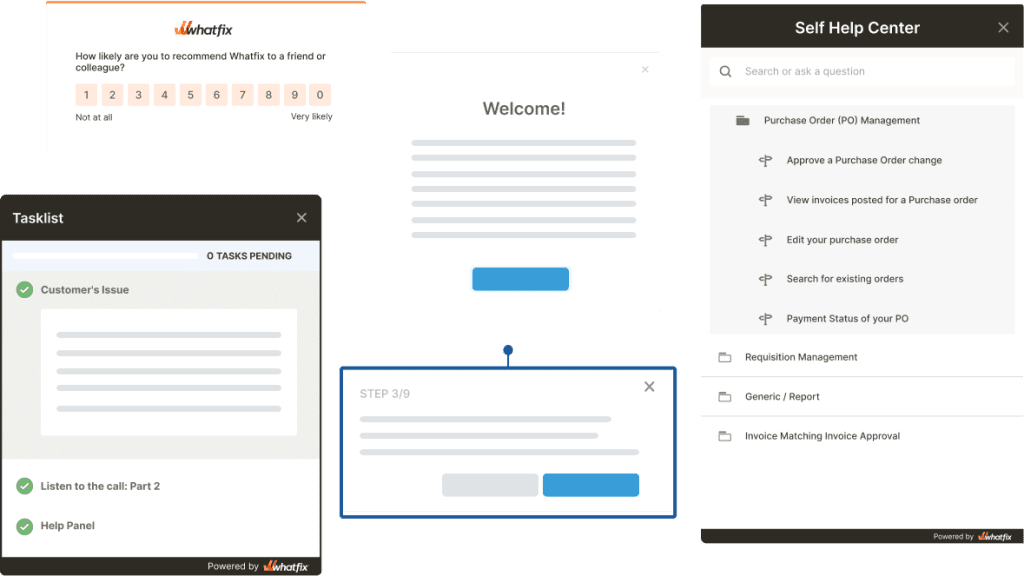
4. Social media support